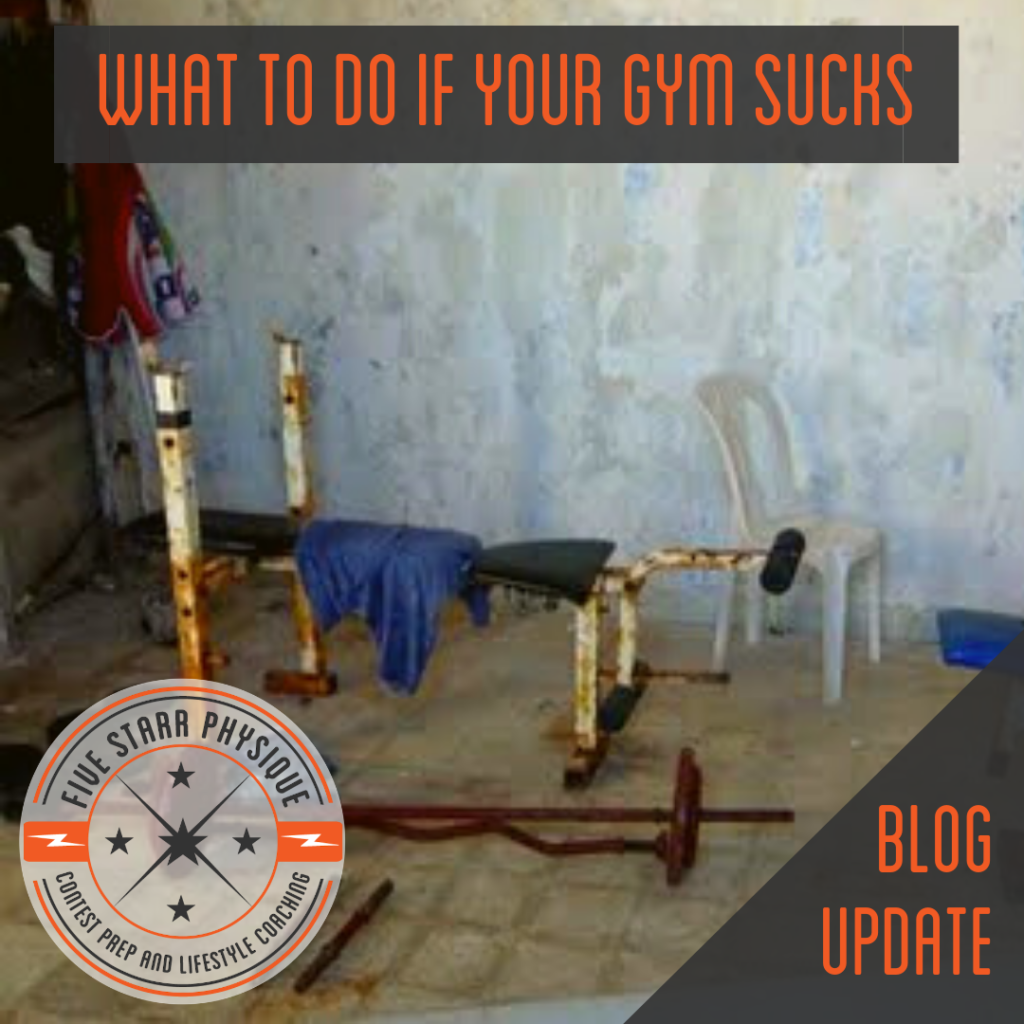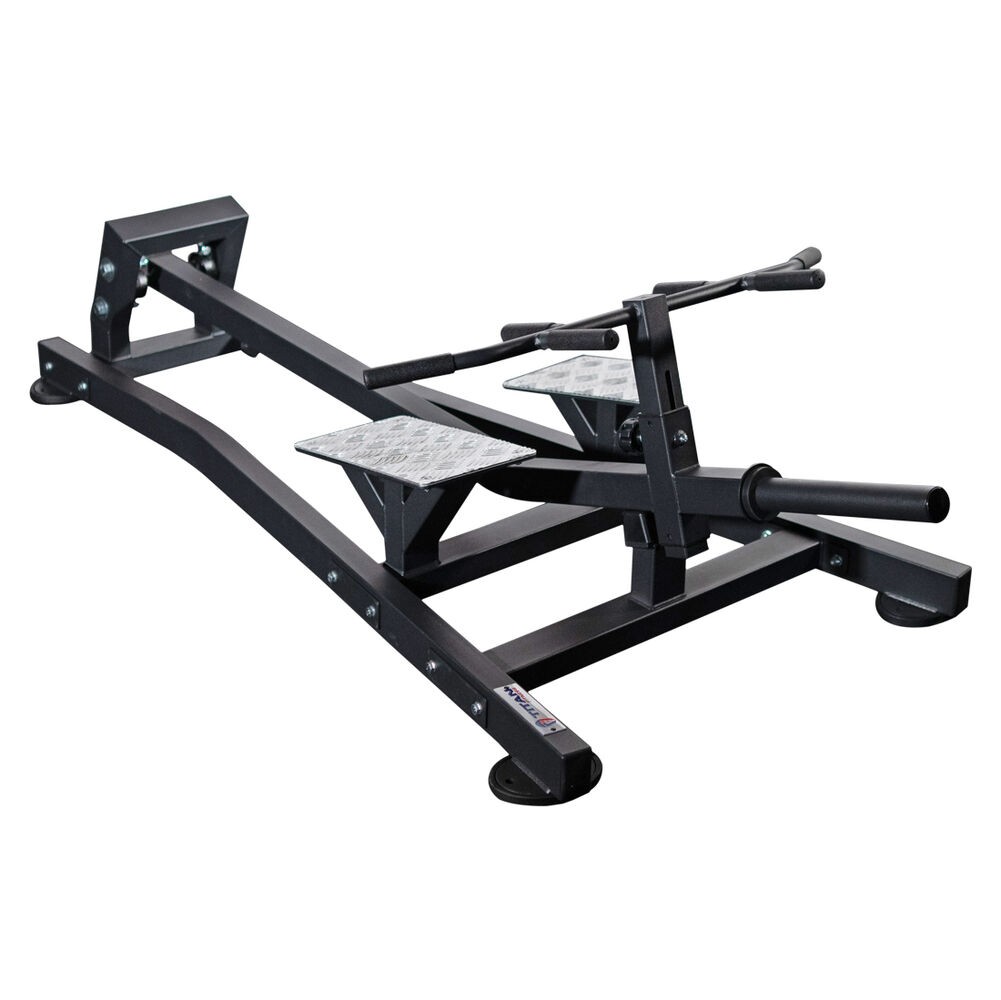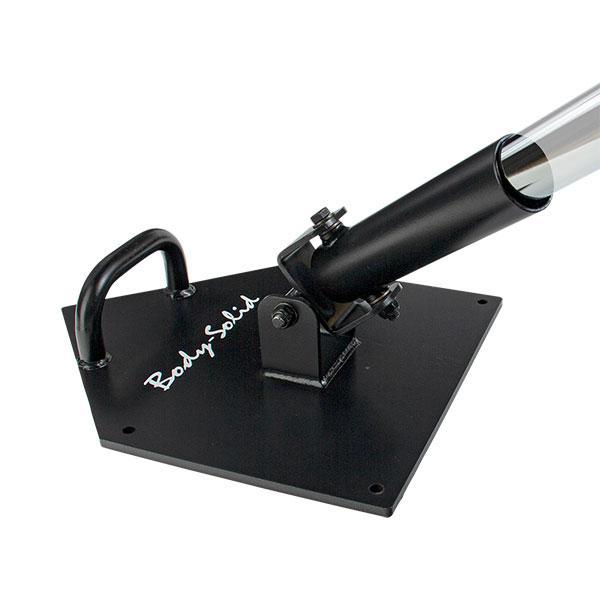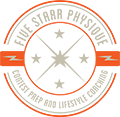
We’ve all been there before – you get a new set of workouts from your coach or start going through a workout program you picked up online, and half the exercises are for movements that your gym doesn’t have the equipment for.
Some of this is preventable. I’ve been in gyms – real, actual commercial gyms where people supposedly go to get in a workout – that don’t have a leg press. Or a leg extension machine. Or a squat rack (hello, Planet Fitness). Or all of the above, or any other number of seemingly basic things that you would expect a legit gym to have.
So it’s up to us as lifters then to improvise and make due with what we have. It also never hurts to put in a word at the front desk that “hey, ya know what would be really nice….?” – don’t expect a miracle, but stranger things have happened.
So let’s break it down – this post will get updated over time but I’m starting off with the things that I LOVE to program, but maybe don’t as much as I’d like to because I know a lot of gyms just don’t have it.
Planet Fitness
Let’s start with a special note about my absolute favorite gym chain of all time, Planet Fitness (dripping with sarcasm, in case it’s not clear). I know it’s easy to hate on Planet Fitness, but my complaints are twofold: first, their equipment selection is more limited and tends to suck, and second – their marketing philosophy over the years has been anti-bodybuilding which, yeah, I’m not really keen to support. Sometimes they’re the only (or least worst) option, but at the same time, I encourage people to vote with their pocketbook and find a better gym if you can.
The main equipment limitation we’re up against here is that most PF locations will not have squat racks, or a free weight barbell of any kind. You’ve got machines, DB’s, and a smith machine and that’s typically about it. So anything that calls for a barbell, we’ll be rocking in the smith machine and most of that stuff should work ok. The section below on the T-Bar row will likely be relevant as well.
If your program calls for a deadlift, you might be able to do that in a smith machine if the bar goes low enough (this is hardly ideal, but if you’re in Planet Fitness that needs to be the expectation…seriously). If it doesn’t go low enough, elevate yourself by standing on something short enough to basically “raise the floor.” For a conventional deadlift you want that bar ~8.5″ off the ground or around mid-shin level. Standing on a plate or small step will often get you there. The same trick can be used if you’re bottoming out on a Romanian Deadlift before you get a proper hamstring stretch – just stand on something to elevate yourself.
Hack squat
A hack squat is AWESOME for leg development, and as far as machines go there are few things that beat it – that being said, when I surveyed my IG followers for suggestions for this post, 50% of the answers were “hack squat” – more gyms don’t have one than do, it seems.
A reasonable substitute is the smith machine – you can place your feet a touch out in front instead of directly underneath you, and this creates a pretty reasonable approximation.
Also, if your gym has selectorized or plate loaded squat machines (FreeMotion, Nautilus, Atlantis, and Hammer Strength all make pretty common ones) these can usually do the trick also. Check to see if the foot plate is adjustable, and play around with your foot positioning to emphasize the quads. Exactly HOW to adjust depends on the specifics of the machine – typically you’re looking for a position where, at the bottom, your knees are bent slightly more than your hips.
Lying leg curl
Another commonly absent piece, but this section applies also if you have a lying curl but are missing a seated curl, or standing curl, or any combination.
When you get right down to it, they’re all knee flexion exercises and we want to replace like with like – so any other knee flexion move fits the bill. A few options:
Stability ball rollout
Cable hamstring curl
DB curl (lying face down on bench, DB between feet – awkward but it works!)
T-Bar row
A few notes here – there are a few different kinds of T-Bar row.
A free standing T-Bar row like this is awesome

A chest supported T-Bar row like this is a pile of garbage because it basically doesn’t fit anybody, and the pulling mechanics are atrocious. I’ve seen a ton of these and never found one I liked.

A landmine like this is fantastic – lots of gyms have these, but they like to hide in corners or back rooms.

So, lacking any of those options, a standing row using a low pulley cable with the appropriate handle (close grip or wide grip, depending on what the workout calls for) is your next best bet.
Incline/decline/flat machine chest press
I’ll often program in a machine press at a specific angle – the ‘machine’ part of that is what’s really important, the right angle is more like ‘nice to have’ if you’ve got it. So if it calls for an incline machine press and you’ve got a flat machine press…go to town. A smith machine also works great here.
Machine shoulder press
A lot of these machine presses kinda suck anyway – there’s a popular Hammer Strength plate-loaded machine that just has terrible mechanics, but works GREAT if you get in it backwards (facing the back pad). The idea here is that you’re pressing through a fixed movement path – so the smith machine works well also.
Squat rack
For all you Planet Fitness peeps out there, you know the struggle. If you want to squat, you’re going in the smith machine. If you want to do most anything involving a barbell in fact, you’re going in the smith machine.
Pec deck/reverse pec deck
Some gyms don’t have a pec deck, or if they do it only works one way and not in reverse to hit the rear delts (let’s call that what it is – lazy engineering).
If you’re looking to replace a peck deck fly, any other kind of fly will do the trick – cables or DB’s, take your pick.
For a reverse fly, same – cables (grabbing the right side with your left hand and vice versa) or DB’s (seated and bent over). If you’re not terribly strong the cable might be super tough at low weight, since they really isolate the rear delt and, even if it’s huge, it’s still a pretty small muscle and isn’t going to move a ton of weight.
Cables for crossover (often present, but camped on by and endless line of dudes and therefore not available for practical purposes)
Most gyms will only have one cable setup and it’s not uncommon to have a really hard time getting in there. The first option should be to (nicely?) force your way in, because the variation in possible angles of attack makes this better than the alternatives.
But failing that, a pec deck works well or you can do flys with a DB using various angles on the bench (try a decline bench if you can – that’s an interesting feeling!)
In summary…
While it would be nice to live in a fitness utopia where we all have access to everything, the reality is that there are just a lot of crappy, poorly equipped gyms out there and often times that’s what we have to work with. Pretty much any gym can get the job done as long as you walk in armed with creativity and a willingness to go with the flow and experiment.
